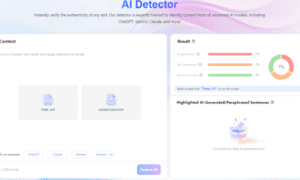In the era of digital transformation, the way we work is undergoing a seismic shift. The traditional office-based work model is giving way to remote work, a trend that has been accelerated by the global COVID-19 pandemic. As teams scatter across the globe, working from the comfort of their homes or remote co-working spaces, the need for effective communication and collaboration tools has become paramount. From video conferencing to instant messaging, document collaboration to time tracking, an array of tools and platforms has emerged to bridge the gap between remote team members, fostering connectivity, productivity, and innovation. This article delves into the essential remote work tools that are revolutionizing the way we work, enabling businesses to unlock new possibilities, build resilient teams, and thrive in the virtual workspace.
Time Tracking and Productivity Tools
Remote work requires self-discipline and effective time management. Time tracking and productivity tools help remote workers stay focused, manage their time efficiently, and track their progress. Here are some popular time tracking and productivity tools:
- FocusTrak: FocusTrak is a focus-tracking tool that allows remote worker and managers to track the time spent focused on different tasks and projects. It provides detailed reports and dashboards to help individuals analyze their productivity.
- RescueTime: RescueTime runs in the background and tracks the time spent on different websites and applications. It provides a detailed breakdown of how time is allocated, helping individuals identify time-wasting activities.
- Todoist: Todoist is a popular task management tool that helps remote workers organize their tasks, set priorities, and track progress. It offers features like due dates, reminders, and project labels.
These time tracking and productivity tools empower remote workers to manage their time effectively, stay focused, and maintain a healthy work-life balance.
Communication Tools
Effective communication is the cornerstone of remote work. Without face-to-face interactions, teams need reliable tools to stay connected and collaborate seamlessly. Here are some of the most popular communication tools used in remote work:
- Video Conferencing: Platforms like Zoom, Microsoft Teams, and Google Meet have become essential for remote teams to conduct virtual meetings. These tools offer features such as screen sharing, chat, and recording, allowing teams to communicate effectively.
- Instant Messaging: Tools like Slack and Microsoft Teams provide real-time messaging capabilities, enabling teams to have quick discussions, share files, and collaborate on projects.
- Project Management: Platforms like Asana, Trello, and Jira help remote teams stay organized by providing a centralized space to manage tasks, assign responsibilities, and track progress.
These communication tools not only facilitate effective collaboration but also help remote teams build a sense of camaraderie and maintain a strong team culture.
Document Collaboration Tools
Remote teams often need to collaborate on documents, presentations, and spreadsheets. Traditional methods of emailing files back and forth can be time-consuming and lead to version control issues. Document collaboration tools solve these challenges by allowing multiple team members to work on the same document simultaneously. Here are some popular document collaboration tools:
- Google Workspace: Formerly known as G Suite, Google Workspace offers a suite of productivity tools, including Google Docs, Sheets, and Slides. These tools allow real-time collaboration, commenting, and version history, making it easy for remote teams to work together on documents.
- Microsoft Office 365: Microsoft’s cloud-based productivity suite provides similar features to Google Workspace, with tools like Word, Excel, and PowerPoint. Teams can collaborate on documents in real-time and access them from anywhere.
- Notion: Notion is a versatile tool that combines note-taking, project management, and document collaboration. It allows teams to create and edit documents collaboratively, making it a popular choice for remote teams.
These document collaboration tools streamline the process of working on shared documents, improving productivity and reducing the chances of errors or miscommunication.
Virtual Meeting and Webinar Tools
Remote work often requires conducting virtual meetings, webinars, and training sessions. These tools enable teams to connect with clients, customers, and colleagues in a virtual setting. Here are some popular virtual meeting and webinar tools:
- Zoom: Zoom has gained immense popularity during the COVID-19 pandemic for its reliable video conferencing capabilities. It allows teams to host virtual meetings, webinars, and even large-scale conferences with thousands of participants.
- Webex: Cisco Webex is another widely used platform for virtual meetings and webinars. It offers features like screen sharing, recording, and breakout rooms, making it suitable for both small team meetings and large-scale events.
- GoToMeeting: GoToMeeting is a user-friendly platform that provides video conferencing, screen sharing, and recording features. It is known for its simplicity and ease of use.
These virtual meeting and webinar tools have become essential for remote teams to connect with clients, conduct training sessions, and deliver presentations, replicating the experience of in-person meetings.
Conclusion
In conclusion, the proliferation of remote work tools has revolutionized the way teams collaborate and communicate, making the virtual office a practical and efficient reality. These tools have become indispensable for businesses seeking to harness the advantages of remote work, including increased productivity, cost savings, and access to a diverse global talent pool. As remote work becomes an increasingly prevalent part of the modern work landscape, businesses must prioritize investing in the right tools to support their teams, facilitate effective communication, and maintain a strong company culture. Embracing these remote work tools is not just a matter of convenience or adaptation to current trends, but a strategic move that positions organizations for success in a rapidly evolving work environment. Through the thoughtful implementation of these tools, companies can empower their teams to excel, drive innovation, and achieve their goals in a connected, virtual world.



































